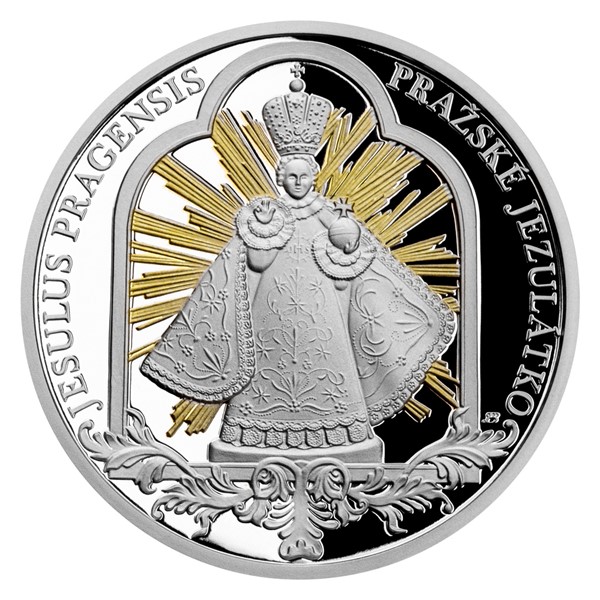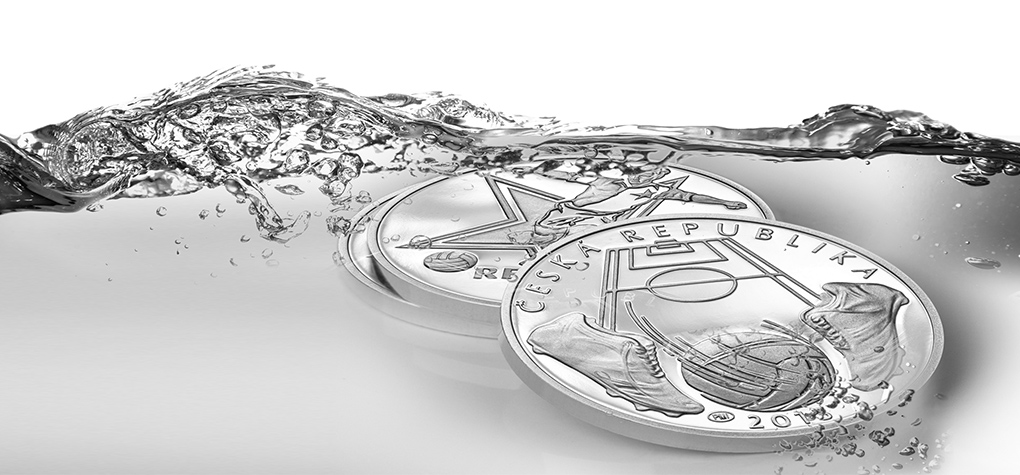Good Suggestions To Antique Finish Prague Mint Coins
Good Suggestions To Antique Finish Prague Mint Coins
Blog Article
What Is The Process To Take A Plaster Model And Scan It To Make A 3d Digital Model Of Gold Medals Or Coins?
The process of scanning requires specialized equipment that captures the plaster maquette digitally. This digital copy can be used for a variety of purposes during production.
3D ScanningHigh-resolution 3D scanners are used to capture the dimensions and specifics of a plaster model. These scanners can record measurements and geometry through laser scanning or structured light, as well as other methods.
Capturing Surface Information: The scanner emits laser or light beams on the surface of the model. The scanner tracks the distortions and reflections these beams cause, taking in surface information.
Data Collection. When the scanner is moving across the surface it captures numerous data points. The outcome is a digital picture of the model’s shape contours, details, or contours.
Conversion into a 3D Model: The data points are then reconstructed using special software. This model reproduces the physical properties and measurements of a plaster maquette.
There are a variety of reasons to make a 3D digital model
Digital 3D model allows for precise replication of the physical model’s dimensions and specifics. It is important to maintain this accuracy in order to ensure that the final design of the gold medal or coin is in line with the original.
Digital models can be easily modified or improved. Designers can modify the 3D model, without changing the original plaster maquette. This allows for repeated adjustments or enhancements.
Compatibleness of Digital 3D Models with Manufacturing Processes. Digital 3D model are compatible with a variety of manufacturing technologies such as CNC machine.
Digital 3D models serve as a document of the design. They can be stored digitally for reference in future reference, to make reproductions, or to document the history of the design.
Through scanning and generating a 3D representation of the plaster model, manufacturers and designers can simplify the process of manufacturing, ensuring accuracy and fidelity in replicating the original model. View the top rated Scanning and 3D Modeling Prague Mint gold coins site advice. including gold dollar coin 2000, ngc grading, silver price in dollar, price of gold 1 oz today, buy gold pieces, 2000 dollar coin, old silver coin, online silver buying, $5 gold coin, gold bullion bars for sale and more. 
What Is The Procedure Of Laser Technology? Laser Technology Is Used To Refine The Surface, Or Master Hub For Gold Coins Or Dies Or Medals?
Laser technology used in die production or master hubs can be utilized to improve the surface and improve accuracy. This is the way laser technology can be utilized to achieve this Surface Refinement
After initial machining the surface of the die or master hub is polished with laser technology. It assists in smoothing out imperfections and remove burrs.
Detail Enhancement-
Laser engraving and ablation techniques can be utilized to enhance or improve intricate aspects of the master hub or die. Lasers can precisely etch or remove material to create precise lines patterns, textures, or intricate patterns that may be challenging to create using conventional machine.
Microstructuring-
Laser microstructuring can create microscopic features and patterns on the surface of the die. This process can create textures or patterns to enhance the appearance and security features of coins or medals.
Treatment and Surface Hardening
In some cases laser technology can be employed for surface hardening or treatment of the die or master hub. This improves the strength and durability of the surface in order to guarantee longevity during the striking.
Precision Modifications
Laser technology allows precise modifications on master hubs or dies, without affecting their overall design. It allows for modifications to be made to the surface of the die, and addresses any discrepancies or imperfections that could affect the overall quality of struck medals or coins.
Controlled Material Removal
Laser ablation allows for precise material removal. This is particularly useful in areas that require exact details to be defined. This is a non-contact method of material removal process that maintains the integrity of surrounding areas.
Laser technology is used to improve details and to refine dies. This improves precision and quality of the surface. It's a perfect complement to traditional machining and allows for precise manipulation of the surface characteristics of dies that are critical for striking gold coins or medals. Check out the most popular laser processing Prague Mint gold coins site info. including 2000 gold dollar, five dollar gold piece, apmex gold coins, sovereign british coin, canadian gold maple leaf coin, buy gold bars from bank, small gold coins, 50 pesos gold coin, american gold eagle, gold medal gymnasts and more.
In What Ways Do Gold Coins Or Medals Go Through Coating Processes To Shield The Metal?
The coating process is used to protect, enhance the appearance, or achieve specific aesthetic results. These are the various kinds of coatings used.
Clear Protective Coatings (Varies). A clear protective coat like lacquer, which is a special plastic, can be applied to protect the surface against oxidation, tarnishing or scratches. This coating helps maintain the original appearance of the coin and protects any metal underneath.
Enhancement of Appearance
Gold plating and Gilding: Gold coins or medals may be plated with a thin gold layer. This adds a luxurious finish to the coin, or medal.
Aesthetic Effects
Patina and Antique Finishes Chemical treatments or specific coatings can be applied to produce an antique or patina effect. This process gives depth and character to the design by giving it an aged, oxidized appearance.
Coloring and Colorization- Certain parts of a medal or coin are colored by using specific coatings or enamels. This is done to highlight certain design elements, create the an interest in the eye.
Anti-Tarnish Coatings-
Anti-Tarnishing Solutions – These coatings are applied to coins or medals that feature intricate designs and areas prone for tarnishing. The coatings are intended to prevent the metal from oxidizing or discoloring as time passes.
Specialized coatings to protect or authentication-
UV-Reactive Coatings and luminescent Coatings Some coins and medals are coated with coatings that are UV reactive, revealing encrypted elements or hidden components for security purposes or authentication.
Selective Coatings to Block Contrast
Selective Coating RemovableIn some instances the coatings of medals or coins are removed in a specific manner to provide contrast on polished and coated surfaces.
Each process has a distinct goal, such as to improve the appearance of the metal or appearance of metal, enhance protection, increase security, or create certain aesthetic effects. The coatings can affect the aesthetic appeal as well as the durability and value of gold coins as well as other kinds of medals. Check out the top coating Czechoslovakia gold medals site advice. including gold silver coins, hidilyn diaz, coin 1, medal gold medal, gold dollar, 2000 p gold dollar, gold bullion, gold and coin shops near me, gold dollar coin 2000, 1 10 oz gold eagle and more.
How Do Gold Blanks Are Put Into Coin Presses Under Extreme Pressure? And Then Stamped?
In the process of minting the gold coins and medals are produced by pressing them with pressure. Here's the overview of steps involved in loading blanks.
In the feeder system linked to the press, gold blanks have already been prepared and tested for quality. The feeder system is responsible for maintaining that blanks are continuously flowed to the coin press.
Feeding Blanks into the Press
The feeding system was designed to move the blanks one-by-one into the chamber for striking. This allows for precise placement of each blank to be stamped.
Alignment of Position
The blanks inside the press chamber are placed, aligned, and oriented perfectly for the stamping.
Moving at High Pressure
Coin presses gold blanks using high pressure using two dies - one stationary and another moving. The stationary die produces a negative image of the design. The moving die is used as a hammer to strike the blank but the stationary die has the positive impression.
The die is moved to strike the blank with a lot of force and transfers the design onto the blank's surface. Die presses the design to create the relief that is raised on the medal or coin.
Repeated Striking
Multi-strikes can be used to create higher-quality medals or coins, such as proofs or collectors' editions. This results in an improved and clearer image. Each strike helps to refine the details in the blank.
Ejection & Collection
Once struck, the coins or medals created are taken from the presses. They are then put in containers and trays. The designs that are stamped are subjected to quality control inspections in order to make sure that they meet the standards and standards.
Post-Processing-
Minted coins or medals may undergo additional procedures such as edge lettering edge reeding, or post-strike treatment based on the design specifications or mint specifications.
The stamping process under high pressure is essential as it imparts the desired design to the gold blanks, transforming them into finished pieces of gold ready to be used in circulation, collection or commemoration. This process requires precision as any variation in pressure or alignment can alter the appearance and quality of the final product. Take a look at the best minting Czechoslovakia gold coins blog examples. including silver double eagle coin, silver double eagle coin, gold and silver coins, gold sovereign, silver bars for sale near me, mexican gold coins, price of gold 1 oz today, coin gold silver, coin gold bullion, small gold coins and more.